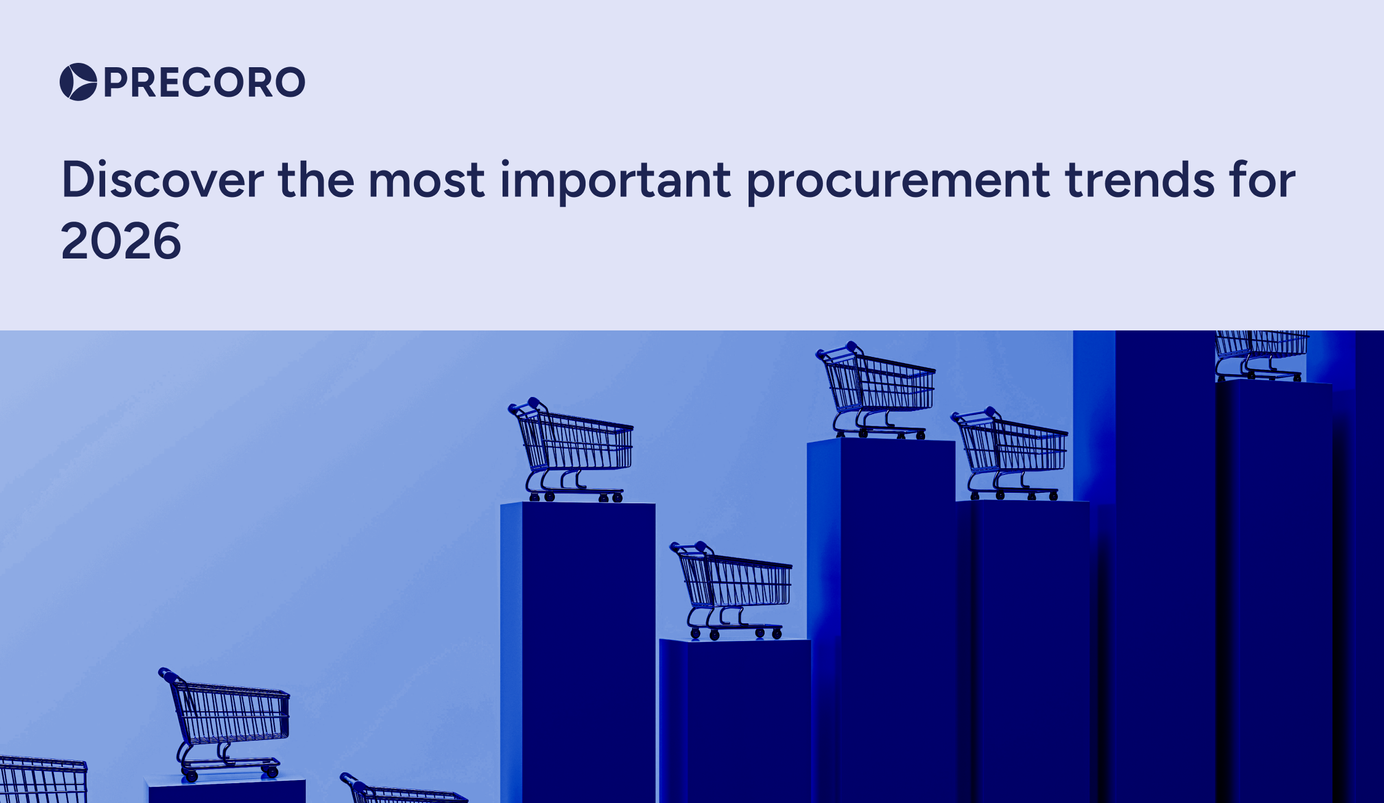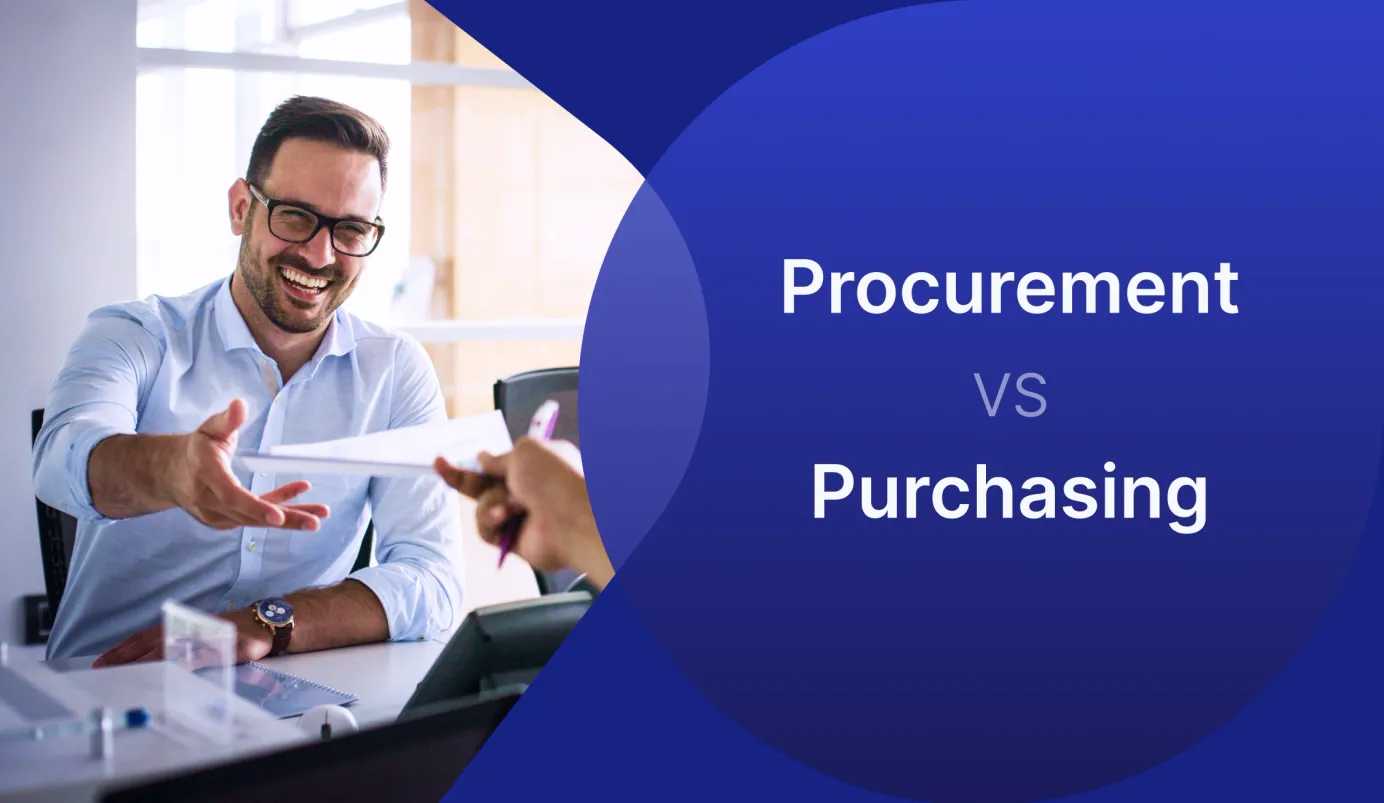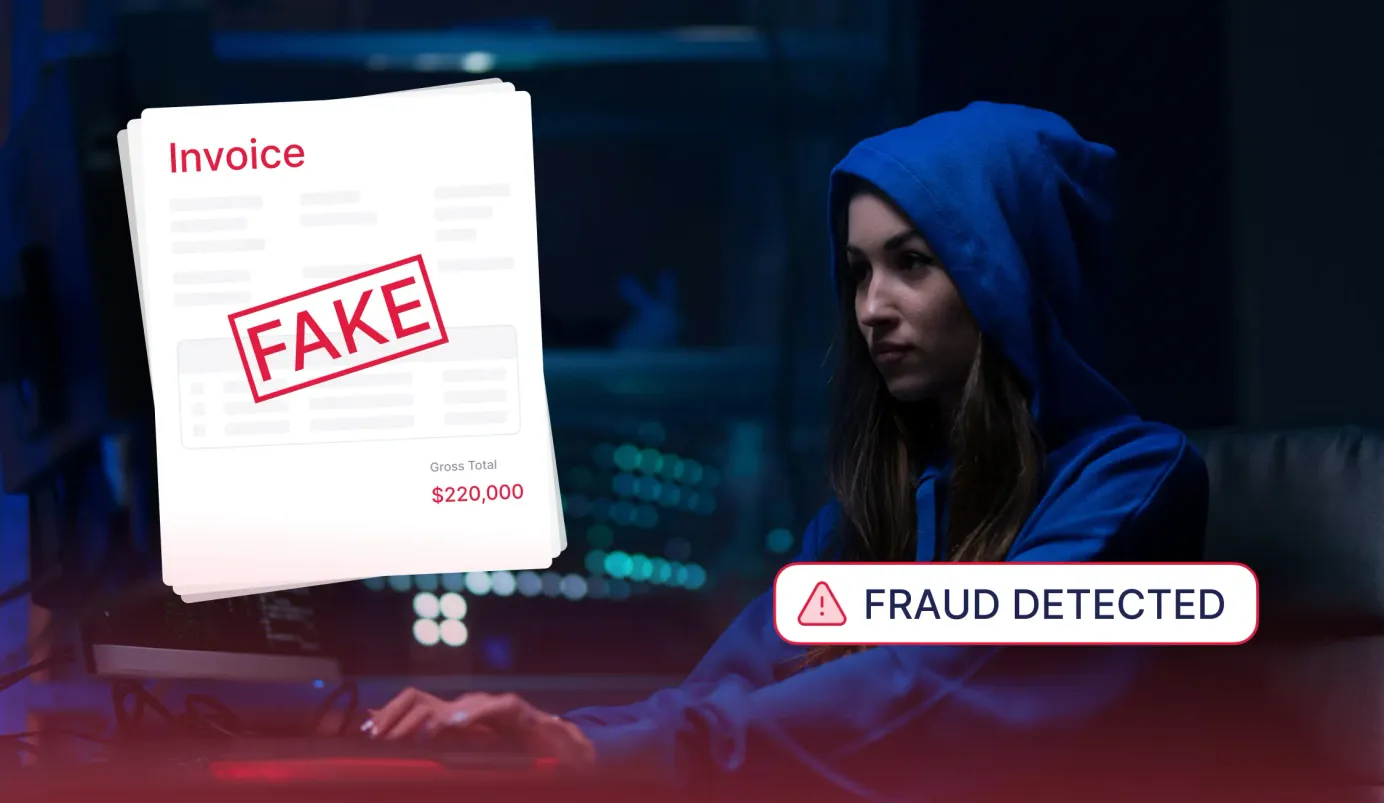
16 min read
Invoice Fraud: What It Is, Ways to Spot It, and Steps to Stop It
Learn about invoice fraud, identify its red flags, and prevent costly scams with our guide.
Nothing hits harder than a fake invoice scam landing on your AP desk. Especially when the payment process seems transparent, steady, and ready: vendor bills that cement supply deals, steer liquidity, and keep your P&L on track. All of a sudden, invoice fraud crashed. As a result, the EBITDA hit stings, but the real damage is the erosion of financial trust.
The truth is harsh: businesses of all sizes are prone to scam invoices. The 2024 survey reveals that invoice fraud affects 44% of companies, with an average of 13 attempts per year, 9 of which succeed and cost an average of $133,000. Even large corporations like Amazon have fallen prey to invoice fraud, with one case of manipulated payments causing a $19M loss.
To not get into a trap, let's dive into the meaning of invoice fraud, its main red flags, and tips on how to spot them early on. You'll also learn how to identify scam tricks before they impact your profits.
Keep reading to learn:
What Is Invoice Fraud?
Types of Invoice Fraud
How Do Fraudsters Create Fake Invoices
What Industries Are Most Prone to Invoice Fraud?
Why Does Manual Invoice Processing Put AP Teams at Risk?
How to Protect Yourself From Invoice Scams
Where to Report a Scammer?
Tools and Technologies to Combat Invoice Fraud
Frequently Asked Questions About Invoice Fraud
What Is Invoice Fraud?
Invoice fraud is a scam in which fraudsters trick individuals or businesses into paying for goods or services that were never ordered or delivered. It typically involves fake or manipulated invoices with altered payment details. Scams rely on exploiting trust, oversight, or weaknesses in payment processes. In some cases, the fraudster alters actual invoices so that payments go to the scammer's account, a tactic related to phishing.
Types of Invoice Fraud
Here's a breakdown of the main types to help you recognize and protect against them:
Fake Vendor and Phantom Vendor Scams
Fraudsters create nonexistent vendors and generate invoices for imaginary goods or services.
Example: A fraudster establishes a fake company called "Prime Office Solutions" and sends a polished invoice to a mid-sized business for 100 laptops, totaling $50,000. The invoice includes a professional logo, fake contact details, and references to a nonexistent purchase order. Assuming it relates to a recent office upgrade, the company processes the payment without verifying the order. The fraudster collects the funds for goods that were never ordered or delivered.
Duplicate Invoices
Scammers submit the same invoice multiple times, often with slight alterations in invoice numbers or dates.
Example: A scammer submits a $10,000 invoice to a company for marketing services, complete with proper formatting and details. A month later, they resubmit the same invoice, changing only the invoice number (e.g., from INV-5678 to INV-5678A) and date. The accounts payable team, swamped with hundreds of invoices, overlooks the duplication and pays both, resulting in a $10,000 overpayment to the scammer.
Altered Invoice Details
Fraudsters alter payment details on legitimate invoices to divert funds. It's a classic example of invoice manipulation fraud.
Example: A hacker intercepts an email containing a legitimate $15,000 invoice from a trusted supplier. They modify the bank account details to their own and forward the altered invoice to the company. The company pays the invoice as usual, unaware of the change, and the funds are diverted to the hacker's account. Fake invoice fraud often goes unnoticed until the supplier follows up about the unpaid invoice.
Insider Fraud
Employees misuse their access to approve fraudulent invoices, create phantom vendors, or collaborate with external fraudsters.
Example: An accounts payable clerk at a large corporation registers a fictitious vendor, "Tech Services LLC," in the company's system. Over months, the clerk generates and approves invoices for nonexistent IT consulting services, directing payments to a personal bank account. By the time an internal audit uncovers the scheme, the clerk has pocketed $50,000.
Phishing and Social Engineering
This type of invoice fraud includes email spoofing, phishing, and CEO fraud. Basically, they fall under one umbrella—Business Email Compromise (BEC). Cybercriminals impersonate vendors or executives to manipulate employees into revealing sensitive information or making unauthorized payments.
Example: A cybercriminal spoofs the CEO's email address and sends an urgent message to the finance manager: "We need to pay Global Logistics $25,000 immediately for a critical shipment. Approve this by the end of the day." Believing it's a legitimate request, the finance manager processes the wire transfer without further verification. The funds go to the fraudster, and the fake invoice scam is revealed only when the real CEO questions the payment.
Intercepted Payment Scams
Cybercriminals intercept mailed checks or online payments.
Example: A hacker breaches a company's payment system via a phishing attack. They monitor outgoing transactions and, just before a $30,000 wire transfer to a key supplier is sent, alter the payment instructions to redirect the funds to their own account. The supplier reports nonpayment, prompting the company to investigate the breach and attempt to recover the lost funds.
Overbilling
Vendors charge more than agreed upon or bill for undelivered items. This can involve genuine vendors with fraudulent intentions.
Example: A supplier contracts to deliver 200 units of raw materials at $50 each, totaling $10,000. However, they send an invoice for 250 units, charging $12,500. The company, busy with multiple shipments, failed at invoice fraud prevention, didn’t match the invoice to the delivery receipt, and paid an inflated amount. The supplier keeps the extra $2,500 without delivering the additional units.
Advance Fee Fraud
Companies are asked to pay in advance for goods or services that are never delivered.
Example: A small business receives a "supplier" offer for high-quality office furniture at a 50% discount, requiring full payment of $8,000 upfront. Enticed by the deal, the business wires the money. After receiving the payment, the "supplier" disappears and cuts off all contact. As a result, no furniture was delivered, but the business lost $8,000.
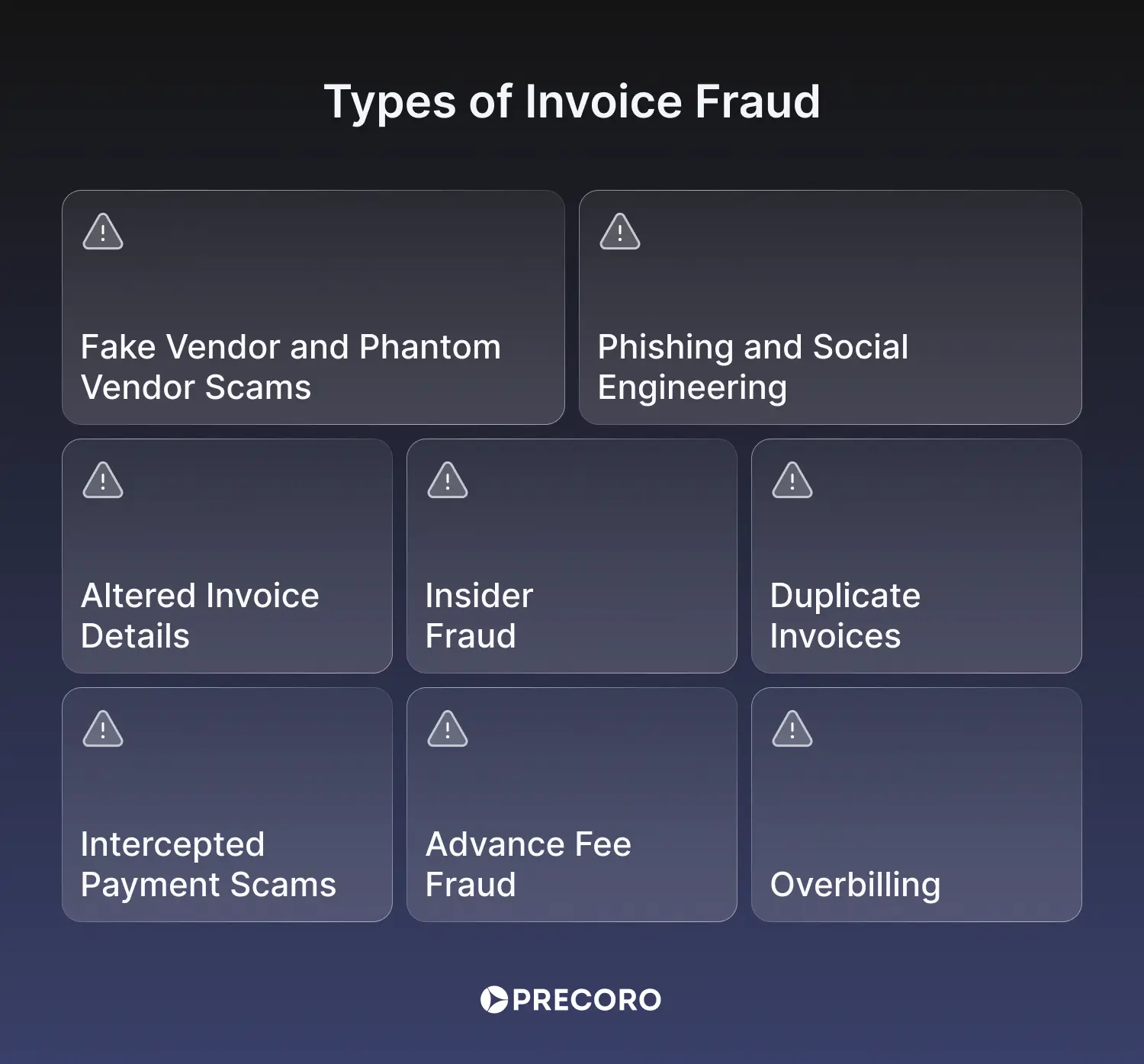
How Do Fraudsters Create Fake Invoices
When it comes to scamming businesses, fraudsters are highly resourceful. They use a mix of tools—from altered invoices to entirely fabricated documents and even AI-generated deepfakes. Here are the typical tactics they use to create fake invoices:
Mimicking Legitimate Invoices
First, fraudsters study real invoices to learn their structure and key details. Then, they copy elements like company branding—logos, fonts, and colors—along with standard fields such as the company name, address, invoice number, date, and amount due. As a result, the fake invoice looks authentic.
Using Design Tools
Fraudsters often use graphic design software, like Adobe Photoshop or online editors, to craft professional-looking invoices. They may also scan a real invoice and change details such as payment instructions or amounts to match their intentions.
Fabricating Believable Details
To seem more authentic, fraudsters use company names close to legitimate vendors, such as "ABC Supplies" rather than "ABC Supply Co." They also send invoices to businesses likely to expect such transactions, increasing the chance of payment.
Delivery Methods
Fraudsters carefully choose how to deliver the fake invoice. They use email spoofing to send it from a fake address that looks legitimate (e.g., "accounts@abcsupply.co" instead of "accounts@abcsupply.com"). To add authenticity, they may also send printed invoices by physical mail with a fake return address.
Manipulating Payment Instructions
The key to their scam is to redirect funds to themselves. Thus, they include bank details or payment instructions (e.g., wire transfer info) that lead to accounts they control, not the legitimate company's.
Creating Urgency
Fraudsters mark the invoice as urgent or overdue to avoid scrutiny and force the recipient to act quickly. They may include phrases like "Payment due immediately" or "Late fees apply" to create a sense of urgency.
Social Engineering Tactics
Some fraudsters go further by posing as vendors. They may call or email the target and pretend to be from the company's accounts department to "follow up" on the invoice. This trick builds trust and strengthens the scam.
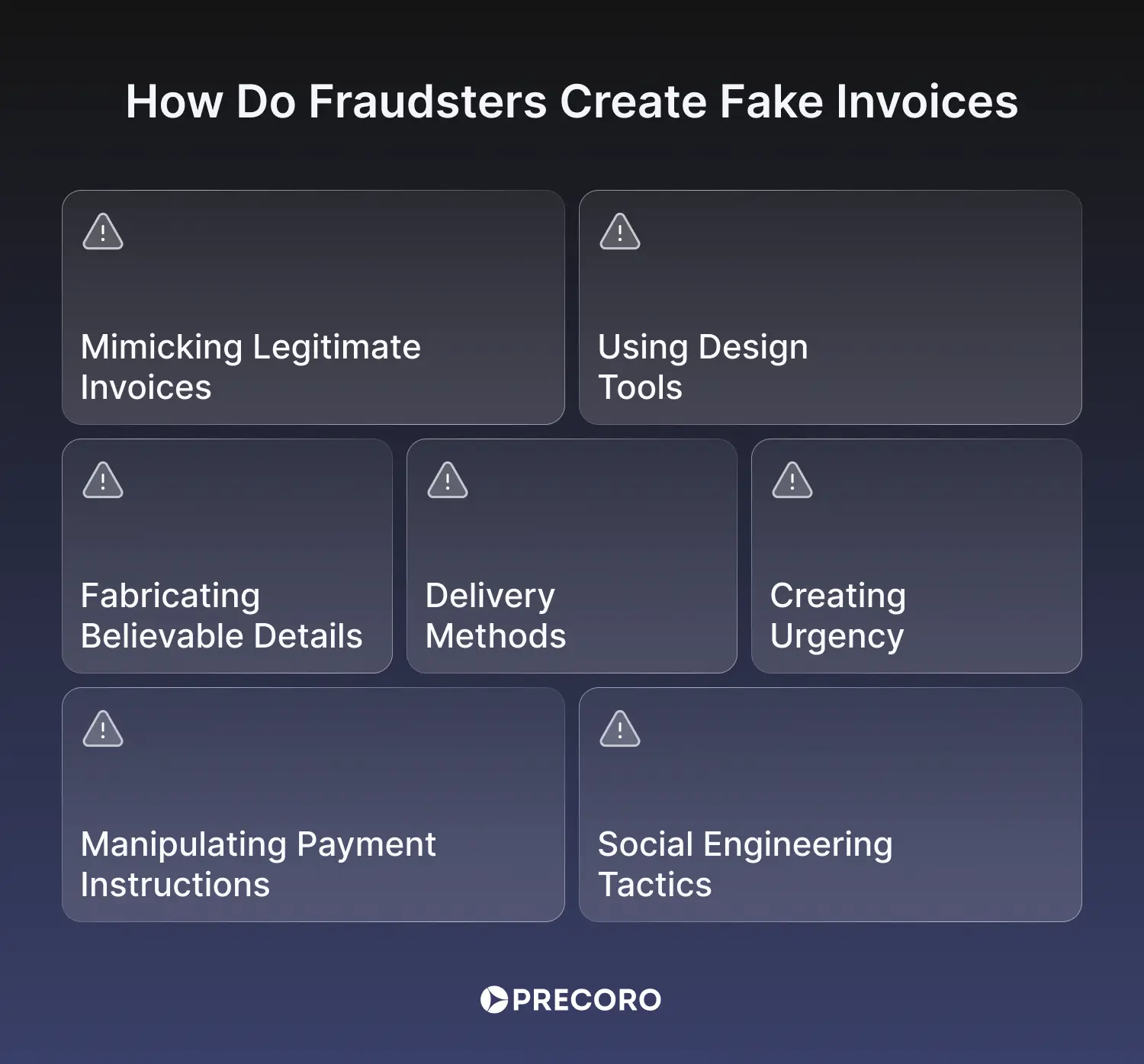
What Industries Are Most Prone to Invoice Fraud?
Invoice fraud impacts businesses everywhere, but some industries are prime targets. Those with high transaction volumes or unique characteristics are especially vulnerable. Let's explore which sectors are most at risk and why they're easy prey for fraudsters.
Healthcare
- Complex billing systems: Healthcare institutions often have intricate billing processes, which involve multiple services, providers, and insurance entities.
- Volume: High transaction volumes, both in frequency and diversity, can camouflage fraudulent invoices.
- Regulatory overheads: Constantly changing regulations can sometimes create gaps or oversight that may be exploited.
Construction and real estate
- Multiple vendors: Large construction projects involve myriad contractors, suppliers, and service providers, which can lead to phantom invoices.
- Project-based work: The start-and-end nature of construction projects might lead to less stringent scrutiny at the project's conclusion.
- Cost overruns: Overbilling can be disguised as unexpected project costs or material price hikes.
Retail
- Supply chain complexity: Retailers often have extensive and intricate supply chains. Thus, it's easier for fraudsters to introduce fake vendors or alter existing invoices.
- High transaction volume: The sheer volume of products, suppliers, and transactions can lead to oversights.
Manufacturing
- Varied components: Manufacturing units source multiple components from various suppliers, a scenario that can be exploited with duplicate or fake invoicing.
- Global supply chains: International operations introduce complexities that can be manipulated, such as language barriers and unfamiliarity with foreign vendors.
Education
- Diverse expenditures: Educational institutions have varied expenses, from research equipment to administrative supplies, which can open the door to false invoicing.
- Public funding: Institutions receiving public funds might be targeted on the assumption that their invoice vetting processes are laxer.
Financial services
- Trust factor: Given the nature of their business, financial service providers often operate on a foundation of trust, which can be exploited.
- Complex transactions: The multitude of services, from loans to asset management, means varied and often complicated invoicing.
Non-profit organizations
- Less rigorous scrutiny: Non-profits, especially smaller ones, may lack the rigorous financial controls present in corporate entities.
- Dependence on grants and donations: Invoices can be manipulated to siphon off funds for noble causes.
Hospitality and travel
- Seasonal operations: Business peaks and troughs, tied to travel seasons, can lead to less stringent invoice scrutiny during busy periods.
- Diverse services: The range of services, from accommodation to tours, means multiple vendors and invoice types.
Why Does Manual Invoice Processing Put AP Teams at Risk?
Invoices come in all shapes and sizes—some crisp, others barely legible—requiring your team to painstakingly enter details like vendor names, amounts, dates, and line items by hand. This takes up time and opens the door to mistakes—think incorrect amounts or mismatched vendor details.
Then there's the approval bottleneck. Invoices get trapped in a maze of emails, causing delays that frustrate vendors and push payments past their due dates. Without a centralized system, tracking what's been paid, who's paying, and why becomes a guessing game. The fallout? Your team struggles to provide status updates, deal with unhappy vendors, and take advantage of early payment discounts (and the savings that come with them).
But the real cost is what your team misses. Instead of focusing on vendor performance or process improvement, they spend hours on repetitive tasks. Worse, this lack of visibility and control exposes your company to financial and reputational risks. That's where invoice fraud prevention becomes essential. Without it, your funds remain vulnerable in a system stretched too thin. And you already saw how it can result in invoice fraud.

How to Protect Yourself From Invoice Scams
Invoice scams can affect both the sender and the payer, and the methods to protect yourself depend on which side of the transaction you're on. Here's how to defend against fake invoice fraud in both roles:
How to Protect Against Invoice Scams as a Supplier:
- Harden Internal Controls: Use multi-step approval workflows, segregate duties, and encourage clients to verify all payment changes through trusted contacts.
- Enforce Email Security: Require MFA, apply DMARC/SPF/DKIM, and train staff to detect phishing and spoofing attempts.
- Secure Payment Processes: Use authenticated invoice portals, avoid emailing sensitive data, and audit bank details regularly.
- Monitor Transactions in Real Time: Set up automated alerts for unusual payments, changes to your vendor details, or any duplicate invoices your employees may issue.
- Train Teams and Clients: Provide ongoing fraud awareness training and clearly define official communication and payment protocols.
- Review Legal and Insurance Protections: Ensure cyber policies cover fraud and include breach response plans and fraud clauses in contracts.
How to Protect Against Invoice Scams as a Client:
- Confirm Payment Instructions: Always verify new instructions directly with the supplier using a trusted contact method.
- Review Invoices Carefully: Look for inconsistencies, such as unfamiliar terms, incorrect contact information, or changes in payment details.
- Use Purchase Orders: Implement PO invoice processing to reduce the risk of fraudulent invoices and ensure each invoice matches a legitimate order.
- Establish Communication Protocols: Set clear protocols with suppliers to confirm changes in invoicing or payment instructions.
- Report Suspicious Activity: If an invoice seems fraudulent, report it immediately to the supplier and relevant authorities.
Where to Report a Scammer?
If you've been targeted by an invoice fraud scammer, reporting it quickly can help stop the scam and protect others. Here's where to go, based on what I've seen work in practice:
Your Local Police.
Start with your local law enforcement for fraud, especially if you lost money. They can file a report and sometimes coordinate with bigger agencies. It's a solid first step to get the incident on record.
Federal Trade Commission (FTC).
The FTC's fraud reporting site makes it easy to report scams like fake invoices. It's a central hub for consumer fraud complaints, and the FTC shares data with other agencies to detect recurring fraud schemes.
Internet Crime Complaint Center (IC3).
If the fake invoice scam came via email or online (like a phishing attempt with a fake invoice), the FBI's IC3 is the place to report it. They focus on cybercrimes and can dig into digital trails.
Your Bank or Payment Provider.
If you paid the scammer or shared financial details, immediately contact your bank or platform (like PayPal). They can freeze transactions, dispute charges, or flag accounts. For PayPal-specific scams, their Resolution Center lets you report suspicious invoices directly.
State Attorney General's Office.
Most states have a consumer protection division. They handle fraud complaints and can investigate businesses or scammers in your area. Check your state's website for a fraud reporting form.
If it's an IRS-related fake invoice scam (like a fake invoice claiming to be from the IRS), forward the details to phishing@irs.gov and report it to the Treasury Inspector General for Tax Administration (TIGTA). For other specific cases, like a vendor impersonation, you might also notify the real company being spoofed—they'll want to know.
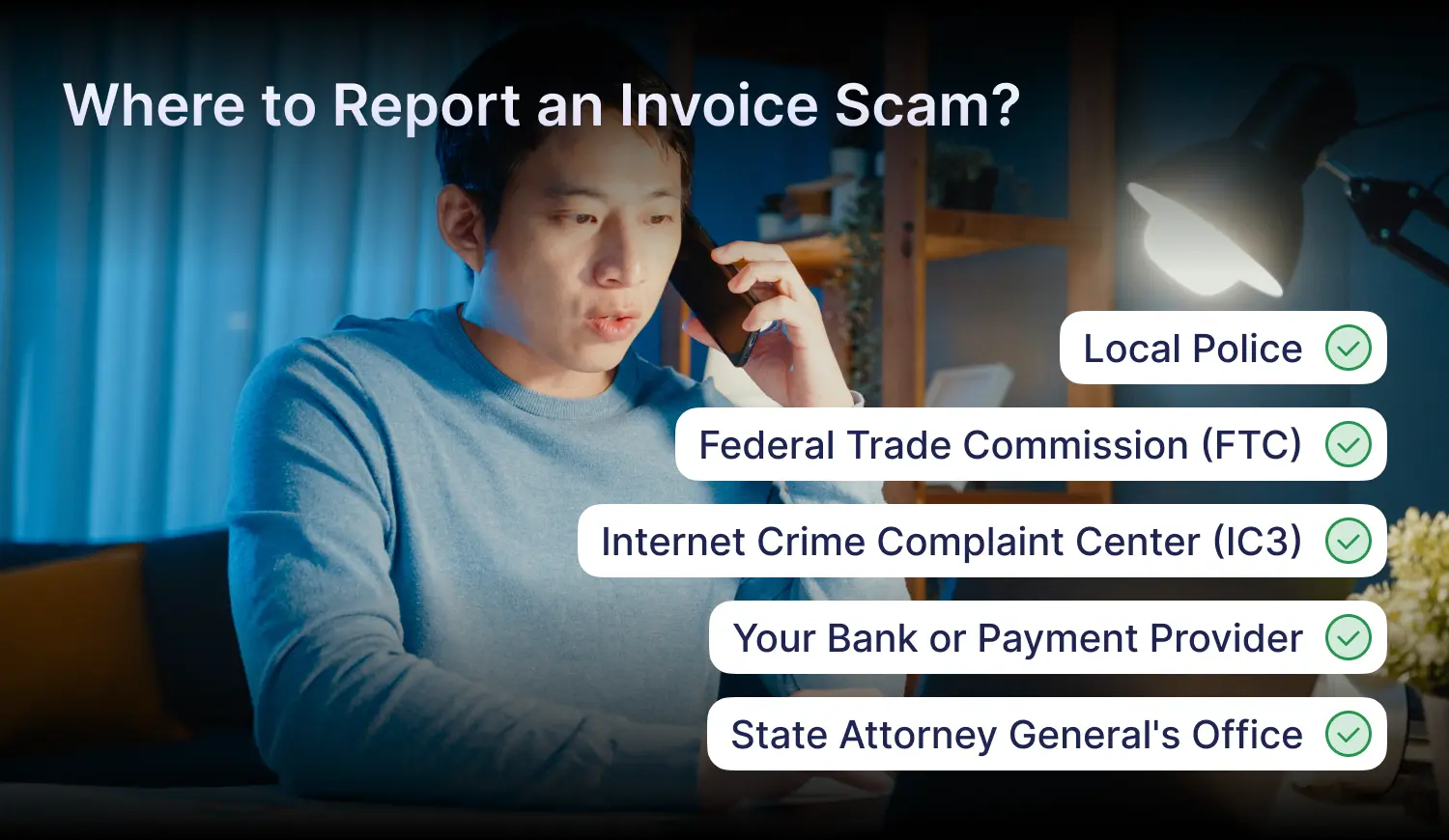
Note!
The sooner you report, the better your chances of limiting damage. To prevent invoice fraud further, keep detailed records of emails, invoices, and payment confirmations. These records can be shared with relevant groups to ensure a swift and effective response.
Tools and Technologies to Combat Invoice Fraud
Smart technologies are taking on invoice fraud—here's how they could seal the cracks in your billing process:
Blockchain
This technology creates a decentralized, immutable ledger where each invoice is recorded as a unique, tamper-proof entry. Once added, invoices cannot be altered or duplicated without invoice fraud detection, ensuring their authenticity and integrity. This transparency allows businesses to verify invoices in real time and reduce the risk of fraudulent submissions.
Artificial Intelligence (AI) and Machine Learning
AI analyzes invoicing data to identify patterns and detect anomalies, such as unusual amounts or unfamiliar vendors, that may indicate fraud. Moreover, machine learning can learn from past fraud attempts to better predict and flag suspicious invoices over time.
OCR Digitization
OCR digitizes paper invoices by scanning and converting them into digital formats. This process compares new invoices with previous ones to identify discrepancies or errors. OCR does not perform three-way matching itself, but it can be part of a system that supports this functionality.
E-Invoicing Software
E-invoicing software automates the invoicing process with standardized formats and secure communication channels. It includes digital signatures and two-factor authentication to verify invoice authenticity. Many e-invoicing solutions offer automatic three-way matching, which compares invoices with purchase orders and receipts to ensure accuracy and reduce fraud. Some advanced e-procurement systems, like Precoro, have additional capabilities to filter SKUs or names of items from invoices in one place, which hugely enhance invoice management.

Secure Payment Gateways
These platforms manage online payments with encryption and built-in invoice fraud detection tools. By verifying the identities of both payers and payees, they ensure payments are directed only to legitimate vendors.
Centralized Invoice Repositories
These databases store all invoices in a single, accessible location, serving as a "single source of truth." Businesses can quickly check an invoice's legitimacy or payment status and prevent duplicates or fake submissions.
Frequently Asked Questions About Invoice Fraud
Fake invoice scams trick businesses into paying for goods or services that don't exist. Scammers pose as real companies and use legit-looking invoices, complete with logos, contact info, and urgent payment terms. They target busy accounting teams, hoping a fake invoice will be approved without scrutiny. Once paid, the money is sent to an untraceable account and is nearly impossible to recover.
Look for signs such as unfamiliar terms, incorrect contact information, changes in payment details, or an unusual sense of urgency. Always verify the invoice with the supplier before making a payment.
Overpayment scams involve sending an invoice with an inflated amount. After the payment is made, the scammer contacts the business, claiming an error, and requests a refund to a fraudulent account. The original payment has already been processed, and the refund request is used to steal additional funds.
Invoice fraud can disrupt supply chains by causing payment delays or diverting funds from legitimate suppliers. This can lead to strained relationships with vendors and potential supply chain disruptions.
Invoice mirroring involves creating a fake invoice that closely resembles a legitimate one from a trusted vendor. The scammer might use similar logos, formatting, and even the exact invoice numbers to make the fake invoice appear authentic.
Safeguard Your Business Finances with Precoro
Invoice fraud can hit your business out of nowhere. Whether you enter data by hand or rely on spreadsheets or basic digital software, gaps in control can lead to fraud. These approaches might seem sufficient—until they're not. Unexpectedly, fake invoices, duplicate payments, or tampered details can slip through and expose your business to financial losses and chaos, no matter how careful you think you are.
But there's a smarter, safer way to stay ahead. One trusted format to manage invoices and prevent invoice fraud is AI-powered AP automation in Precoro. Let's face it—manually processing invoices is nobody's idea of a good time. With Precoro's cutting-edge solution, that headache becomes a thing of the past. The system leverages artificial intelligence to scan invoices and capture key details automatically with impressive accuracy. And it doesn't stop there—as it processes more documents, it learns and refines itself, delivering even greater precision over time.
In addition, Precoro integrates with QuickBooks and Xero to ensure accurate data and reduce manual effort. Custom approval workflows let managers approve invoices fast, with full visibility and audit trails. It offers 2-way and 3-way matches to verify invoices against purchase orders and goods receipts.
Moreover, users are automatically notified about duplicate invoices by activating the Warn if Supplier Invoice or Credit Note # is duplicated setting. Thus, real-time reports reveal trends in spending, supplier performance, and invoice status for faster, smarter decisions.
Automation shortens processing time from weeks to days, lowers error rates, and improves team productivity. With centralized document storage, instant alerts, and multi-currency support, Precoro delivers full control, transparency, and efficiency in invoicing.
What's in It for You?
- Speed: Invoices are processed faster, and there is no endless back-and-forth.
- Accuracy: Fewer errors mean less cleanup and fewer costly slip-ups.
- Smooth Workflow: Approvals flow seamlessly, keeping everything on track.
- Happy Suppliers: Timely payments strengthen relationships and sidestep late fees.
- Time to Focus: Your team ditches the grunt work and tackles big-picture goals instead.
And the result? Fraud risks shrink, manual workloads vanish, and efficiency takes over. It's a game-changer that keeps your business secure and thriving, no matter what surprises come.


